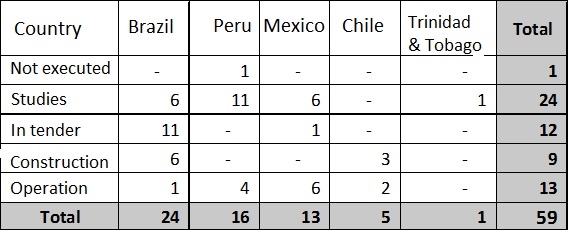Bogotá to pioneer health PPPs
After its success in procuring bankable toll road PPPs under the Fourth Generation of Highways Programme (4G), Colombia is about to roll out a major PPP programme in the health sector.
The Bogotá District Health Secretary announced at a conference held this week, by the Bogotá Chamber of Commerce, local development FDN and Invest in Bogotá, that it is to launch the procurement of six new hospital PPPs aimed at reviving the capital city's tired public health service.
Bogotá’s health infrastructure is in urgent need of an upgrade. It is currently facing a severe shortage of hospital beds - estimated at about 5,000 - and a number of existing facilities badly need modernisation, with new technology or protection against earthquake shocks, for example.
4G Triumphs
Speaking at the 1st International Forum of Private-Public Associations in the Health sector, Clemente del Valle, president of FDN, highlighted triumphs of the 4G programme, led by national infrastructure agency ANI, in its capacity to attract diverse sources of funding.
The Colombian federal government has already approved 33 toll road projects,10 under the first wave of public PPPs (which receive government payments vigencias futuras), nine in the second wave of PPPs, two under the third, and 12 private initiatives, which will not receive government backing. For the public PPPs, sponsors receive a portion of the government payments in US dollars, a proportion which was increased at the request of both sponsors and lenders, in order to open the door to international financing.
Seven first-wave concessionaires have already closed project-level debt for their projects, through some complex and innovative funding structures.
Of these closed transactions, worth Ps13.2 billion, 48% of debt has been provided by local banks, 24% by international lenders, 18% by institutional investors, through the purchase of both US dollar and local bonds, as well as through peso-denominated debt funds. FDN has provided the remainder 10% of credit. Overall 66% of the financing has been provided in pesos and 34% in US dollars.
The government hopes it can replicate its PPPs success with road concessions in the health sector, and is understood to be keen to attract foreign capital to the programme.
Hospital PPP model
The programme, known as "Bogotá Mejor para Todos", envisages the construction of hospitals which will be able to offer 1,200 new beds and improve existing facilities housing about 800 beds.
The first three projects will replace existing hospitals, while the additional three are to serve as brand new facilities:
- Hospital Simón Bolívar: located in the north of the city, upon completion will offer 450 beds
- Hospital de Santa Clara: located in the existing San Juan de Dios hospital complex, would contribute 400 beds
- Instituto Materno Infantil: located in the existing San Juan de Dios hospital complex, will contribute 347 beds
- Hospital de La Felicidad: to be built in the south-west of the capital, would offer 300 beds
- Hospital de Bosa: to be built in the south-west of the capital, would offer 250 beds
- Hospital de Usme: to be located near in the south of the capital, will offer 250 beds
Bogotá has opted for a combination of hospital PPP models for the programme. The first three PPPs will be developed under the "Bata Gris" (grey coat) model, while the latter three will be structured under the "Bata Blanca" (white coat) model. Under the grey coat structure the concessionaire is required to provide non-medical services, such as laundry, surveillance, waste management, security, equipment maintenance, etc. While under the white coat concept the concessionaire also provides medical services, which are more often provided by state doctors.
According to data from the Inter-American Development Bank (IDB), most Latin American and Caribbean countries to date have implemented hospital PPPs under the grey coat model (70%), over the white coat model (30%).
Source: "10 años de Asociaciones público-privadas en salud en América Latina” - IDB
Del Valle commented that while hospitals structured as grey coat projects and public works usually receive more proposals at tender stage, a disadvantage is that they also carry a risk of under use of infrastructure when being operated by the public bodies.
Other PPPs
While Colombia has undoubtedly experienced success with its ongoing roads programme, the country's infrastructure deficit remains vast. Carlos Alberto Sandoval, vice president of structuring and project management at FDN estimates the total required investment in Colombian infrastructure at Ps409 trillion until 2035. This investment includes Ps47 trillion in water, sanitation and solid waste, Ps56 billion in urban transportation, Ps17.4 trillion in the health sector and Ps7.2 trillion in education, among other sectors.
The government appears keen to benefit from the use of PPP in a number of these sectors. The FDN has already been mandated on the structuring of some projects that are due to be procured in the near to medium term.
One such project is a pilot for school PPPs in the cities of Cartagena, Barranquilla and in the department of Antioquia. It has been working with the International Finance Corporation (IFC) on the structuring of the pilot since 2015. The project contemplates the construction, expansion and improvement of 68 primary and secondary-level public educational institutions.
Request a Demo
Interested in IJGlobal? Request a demo to discuss a trial with a member of our team. Talk to the team to explore the value of our asset and transaction databases, our market-leading news, league tables and much more.




